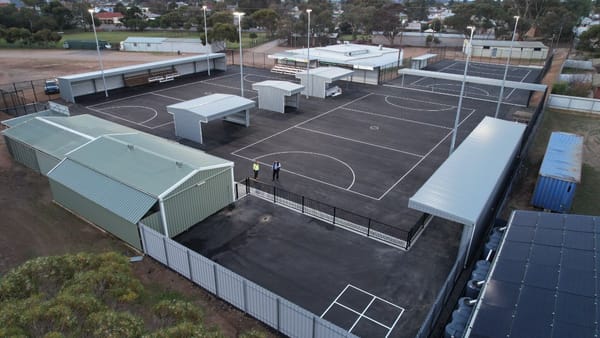How can farmers cut methane emissions? David Smart is about to find out
The Beston Global Food Company will trial the use of a seaweed supplement to reduce greenhouse gas emissions from a Mypolonga dairy herd.

This post was originally published behind Murray Bridge News’ paywall. Paywalled posts are unlocked four weeks after publication. Can’t wait that long? Subscribe here.

A Murraylands dairy company and a Mypolonga farmer are about to launch a trial that could offer the industry a way forward in the fight against climate change – and a chance to turn a profit.
In a South Australian first, cattle at David Smart’s dairy farm at Mypo will be fed a special, seaweed-based supplement which should help them produce less methane gas.
That would allow Mr Smart to claim carbon credits worth about $750 per tonne of methane which would no longer be emitted into the atmosphere.
On the market at present, carbon credits are worth about $30 per tonne of carbon dioxide equivalent, despite a price crash earlier this year; and methane is about 25 times more potent than carbon dioxide, according to the Clean Energy Regulator.
Reducing emissions would also help both farmer and the Beston Global Food Company – which processes his milk – contribute to the fight against climate change, and potentially gain accreditation which could help Beston access new markets.
Beston, headquartered in Adelaide but with operations in Murray Bridge and Jervois, recently won state government funding for the trial.
Asset development general manager Alistair McFarlane said the trial fit with Beston’s efforts to establish itself as an industry leader.

Methane accounts for about half of the greenhouse gas emitted by Australia’s agricultural sector, according to the Climate Council, and is a significant driver of disruptive climate change.
Mr McFarlane noted that legislation currently being debated in Canberra would set Australia on course for a 43% cut in greenhouse gas emissions by 2050.
“We see this as part of our contribution,” he said.
It would also help Beston value-add to its suppliers’ businesses.
“We want to enable our farmers to access the benefits of the feed supplement, both for the health of their stock ... (and) the carbon credits,” he said.
“If the trials stand up, we anticipate there will be a fair amount of take-up.”
How does seaweed reduce methane emissions from livestock?
The supplement at the heart of the trial will be supplied by CH4 Global, an international company which harvests a red seaweed, asparagopsis armata, in South Australian waters.
It takes the form of a powder which will be added to feed troughs in the Smarts’ milking shed at a rate of around five grams per kilogram.
Experts from the Davies Livestock Research Centre will provide advice throughout the trial, having implemented a similar program in beef cattle.
“Our aspiration is we can get a 50 per cent reduction in methane expression,” Mr McFarlane said.
“It has been found in labs to (deliver) an 80-90% reduction, but our cows will be grazing, they’ll be taking in grass as well.”

Gas meters will be installed at each trough to measure methane levels in the cows’ breath.
“There’s a correlation between the front and the back end,” Mr McFarlane said with a laugh.
“We’re not going there.”
After establishing a baseline, the team will spend up to three months trialling the supplement, then several more months analysing the results.
As well as measuring emissions, the team will look at the health of the herd and the quality of its milk.
Automation has already revolutionised the Smarts’ dairy
This will not be the first time the Smart family dairy has embraced innovation, however.
About 12 months ago, the family installed a robotic milking system for their 460 cows.
When a cow feels like she is ready to be milked, she wanders into a stall and enjoys some food while a machine automatically attaches to her udder and draws out the milk.
When her udder is empty, a gate opens, allowing her to wander back out into a paddock.
Some of his cows were milked just once a day, Mr Smart said, and some as many as four times.
“It’s the way of the future, I think, technology and the information you can get out of (it),” he said.

Not only did the system allow him to more carefully manage each of the animals in his herd, using data.
It also freed up his staff to spend more time on other jobs, and gave them something dairy farmers in generations past could only have dreamed about: a sleep-in.
“Now we get up at six or seven in the morning, not four or 4.30,” Cale Moore said.
“In summer we finish at 1.30, and we don’t have to be back and milk at four in the heat of the day.”
- More information about methane in agriculture: www.climatecouncil.org.au.





